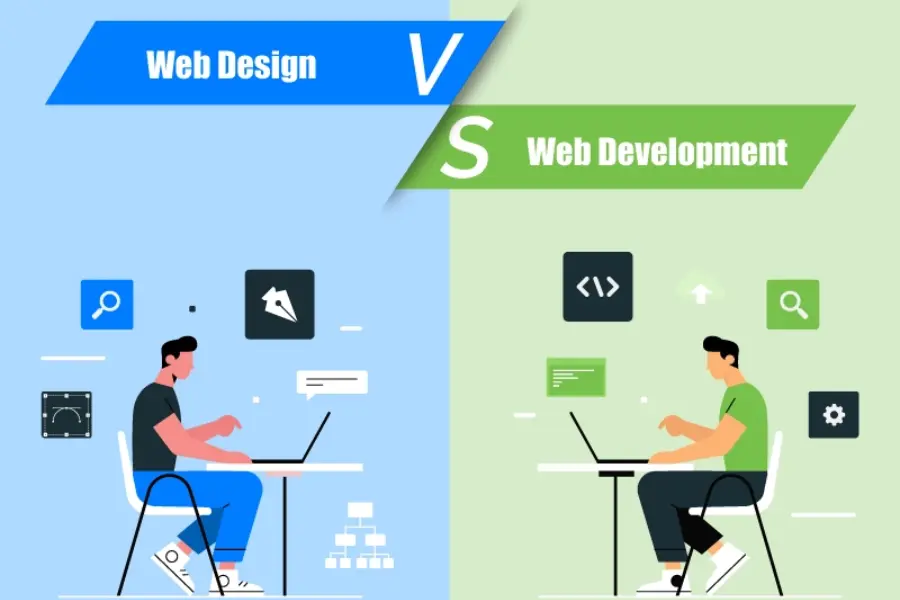Navigating the Divide: Web Design vs. Web Development

In the realm of creating digital experiences, two fundamental pillars stand tall: web design and web development. While often used interchangeably, they represent distinct aspects of crafting a website. Imagine a symphony where design orchestrates the melody, and development lays down the intricate rhythms. Embark on a journey with Light Buzz Media, the top web designing company, to understand the nuances of each discipline and how they harmonise to create captivating online platforms.
Web Design: The Artistic Canvas
Web design is the artistic facet of website creation, focusing on aesthetics, user experience (UX), and interface design. It's the marriage of creativity and functionality, where designers leverage visual elements to convey brand identity and facilitate user interaction.
At its core, web design delves into color theory, typography, layout principles, and graphic design techniques. Designers meticulously craft wireframes and mockups, envisioning the user's journey through the website. They prioritise intuitive navigation, ensuring users seamlessly find what they seek.
Moreover, web designers embrace responsive design, adapting layouts for various devices to deliver the best website design across platforms. Accessibility also plays a pivotal role, ensuring inclusivity for users with diverse needs.
Web Development: The Architectural Framework
Contrastingly, web development focuses on the technical implementation of a website's design. Developers are the architects who breathe life into the designer's vision, translating static mockups into dynamic, interactive web pages. They are fluent in programming languages like HTML, CSS, and JavaScript, building the structural framework and adding functionality into the site.
Web development encompasses two main disciplines: front-end and back-end development.
Front-end developers focus on client-side aspects, shaping what users see and interact with directly. They code responsive layouts, implement animations, and integrate user interfaces with back-end functionalities.
On the other hand, back-end developers work behind the scenes, managing databases, servers, and application logic. They develop server-side scripts, handle data processing, and ensure the smooth functioning of dynamic website components.
Collaboration and Synergy
While distinct, web design and web development are deeply intertwined, requiring collaboration to achieve synergy for designing landing pages and websites too. Designers and developers often collaborate throughout the project lifecycle, exchanging feedback and iterating to refine the final product.
Effective communication between the two disciplines is paramount. Designers must comprehend development constraints and possibilities, while developers need to appreciate design principles to ensure seamless integration of functionality and aesthetics.
Conclusion: Uniting Creativity and Functionality
In the ever-evolving landscape of web design and development, understanding the nuances of each discipline is essential. Web design brings creativity and aesthetics to the forefront, while web development provides the technical infrastructure and functionality that powers the web.
Ultimately, it's the synergy between design and development that elevates digital experiences to new heights. By embracing collaboration and bridging the gap between art and science, designers and developers alike can create immersive, engaging web experiences that captivate audiences and leave a lasting impression. Connect with Light Buzz Media, a leading web design and development company that offers the best of both worlds, design and development. Contact us today.